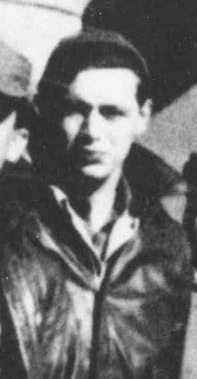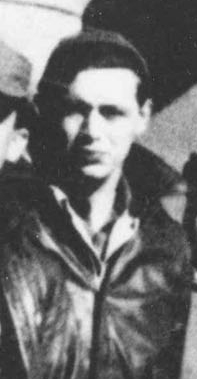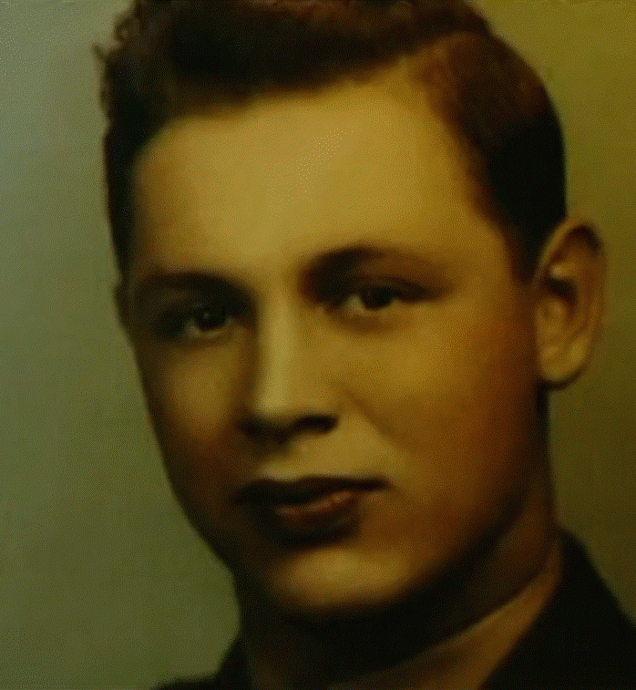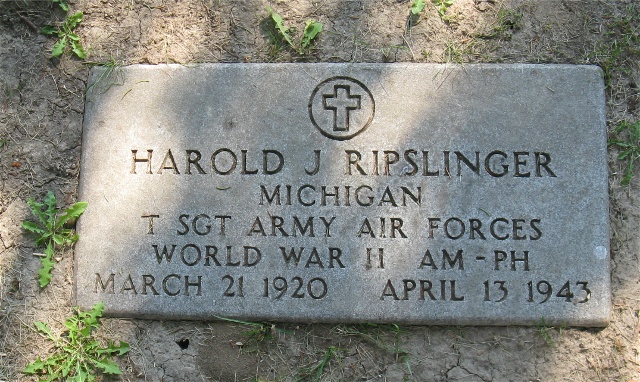Harold Ripslinger was a member of the 1937 St. Andrew High School Football team.
Lady Be Good was a B-24D bomber with the 376th Bombardment Group. On April 4, 1943, The crew was on their first combat mission, a bombing raid on Naples Italy. The plane did not return to base and at the time it was assumed to have crashed in the Mediterranean Sea. In 1958 the nearly intact Lady Be Good was discovered in the Libyan Desert, 440 miles inland from the Mediterranean. Subsequent searches uncovered the remains of all but one of the crew.
Not realizing how far they had overflown their base, the crew had set out north, hoping to reach the coast. Remains of five airmen were found in a group nearly 80 miles from the crash site. The other three (Guy Shelley, "Rip" Ripslinger and Vernon Moore) had set off to try to find help while the other five waited behind. The bodies of Shelley and Ripslinger were found twenty and twenty-seven miles further north, respectively. Moore's remains were never found, although it is possible that in 1953 his body had been spotted and buried by a British desert patrol, unaware that any air crews from the war had ever gone missing in the area.
They survived for eight days, sharing only a single canteen of water while walking over 100 miles in searing heat before perishing.
Harold Ripslinger was a member of the 1937 St. Andrew High School Football team.
Lady Be Good was a B-24D bomber with the 376th Bombardment Group. On April 4, 1943, The crew was on their first combat mission, a bombing raid on Naples Italy. The plane did not return to base and at the time it was assumed to have crashed in the Mediterranean Sea. In 1958 the nearly intact Lady Be Good was discovered in the Libyan Desert, 440 miles inland from the Mediterranean. Subsequent searches uncovered the remains of all but one of the crew.
Not realizing how far they had overflown their base, the crew had set out north, hoping to reach the coast. Remains of five airmen were found in a group nearly 80 miles from the crash site. The other three (Guy Shelley, "Rip" Ripslinger and Vernon Moore) had set off to try to find help while the other five waited behind. The bodies of Shelley and Ripslinger were found twenty and twenty-seven miles further north, respectively. Moore's remains were never found, although it is possible that in 1953 his body had been spotted and buried by a British desert patrol, unaware that any air crews from the war had ever gone missing in the area.
They survived for eight days, sharing only a single canteen of water while walking over 100 miles in searing heat before perishing.
Family Members
Sponsored by Ancestry
Advertisement
Advertisement














